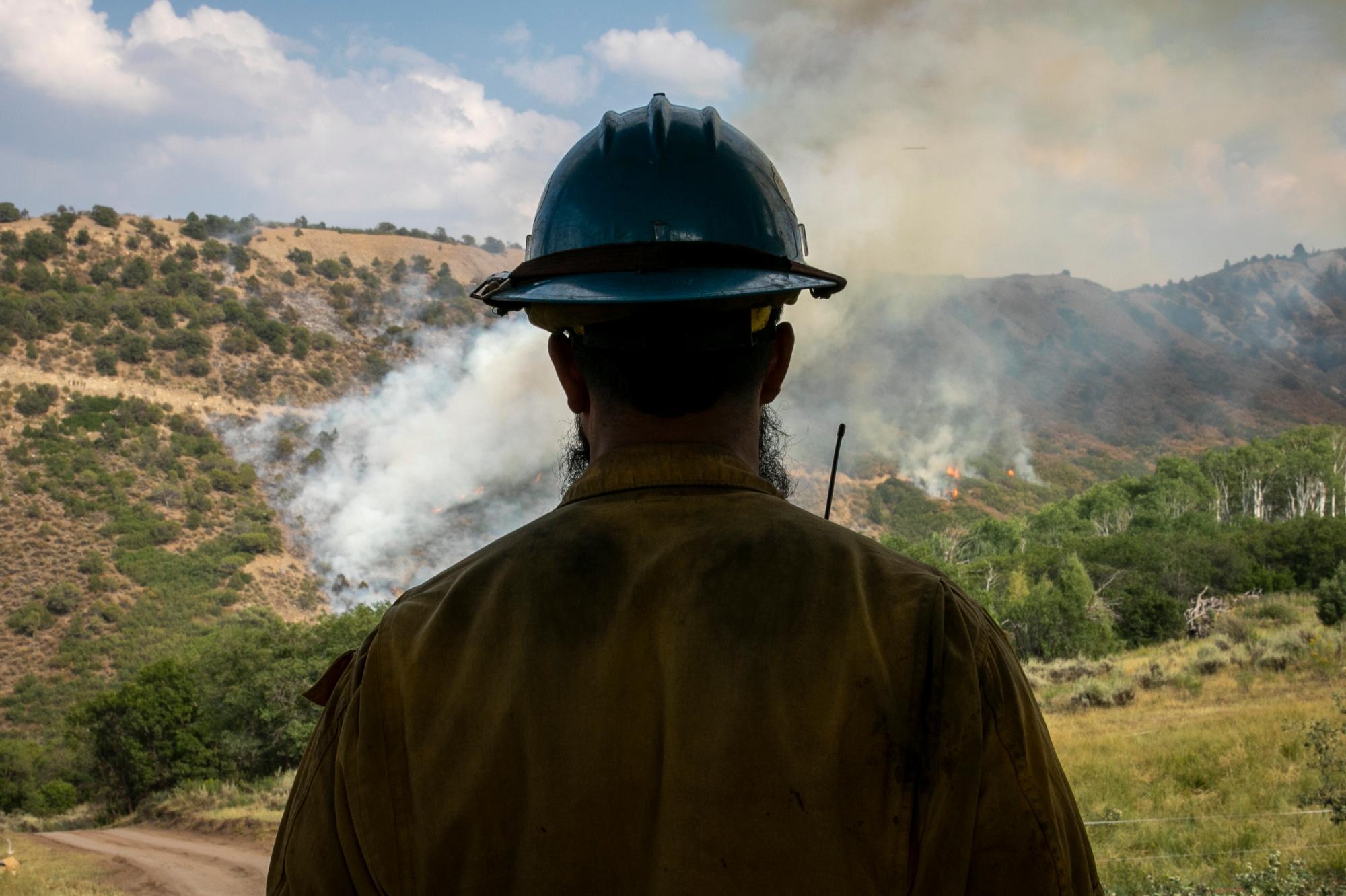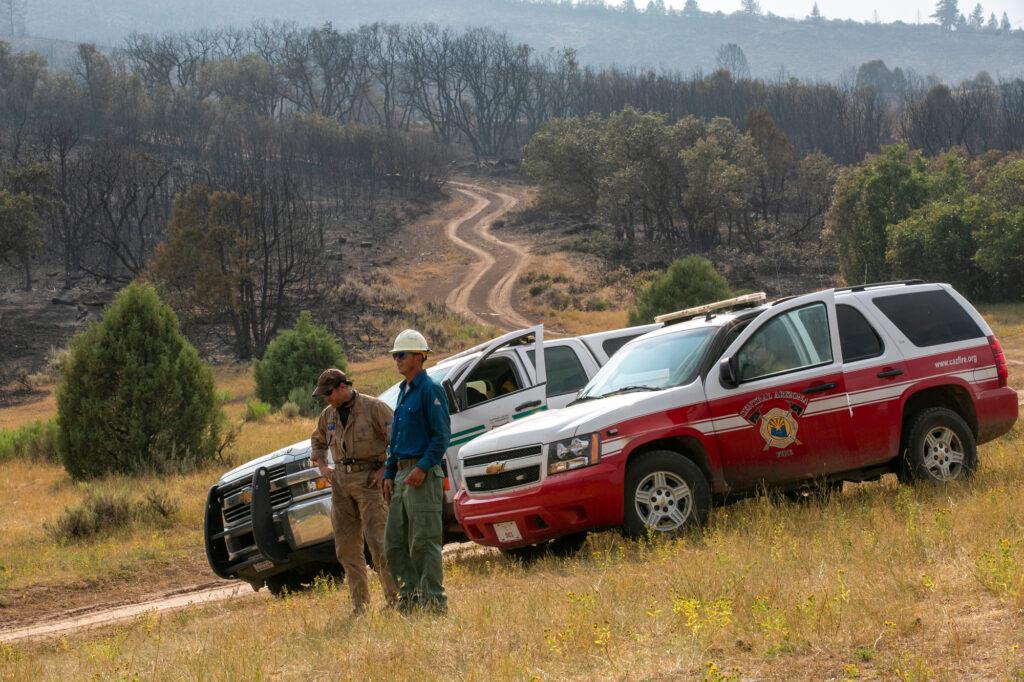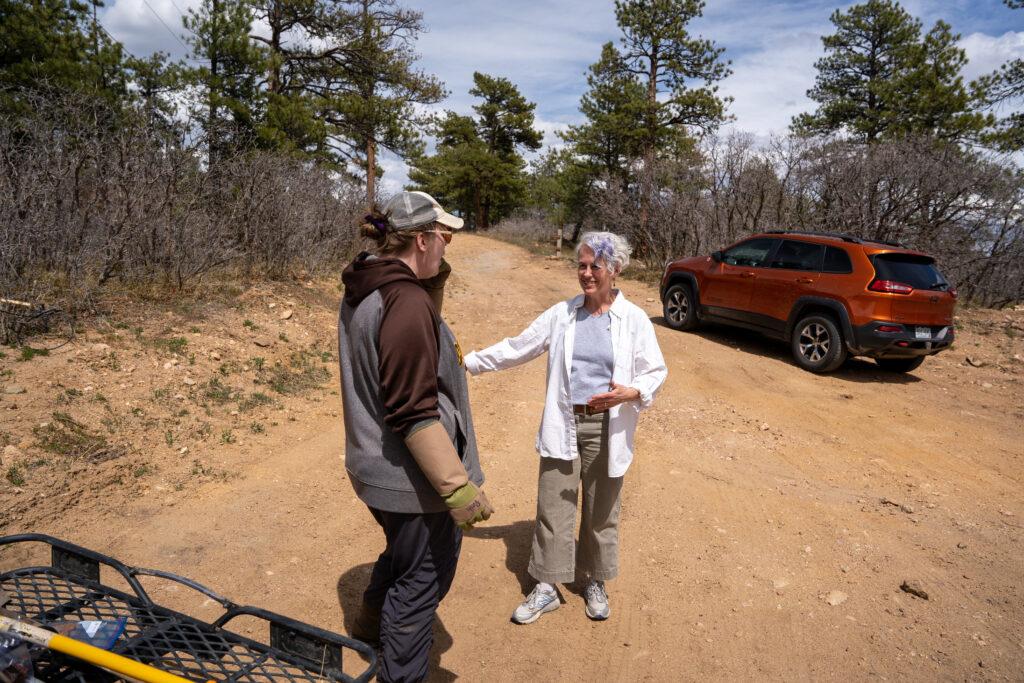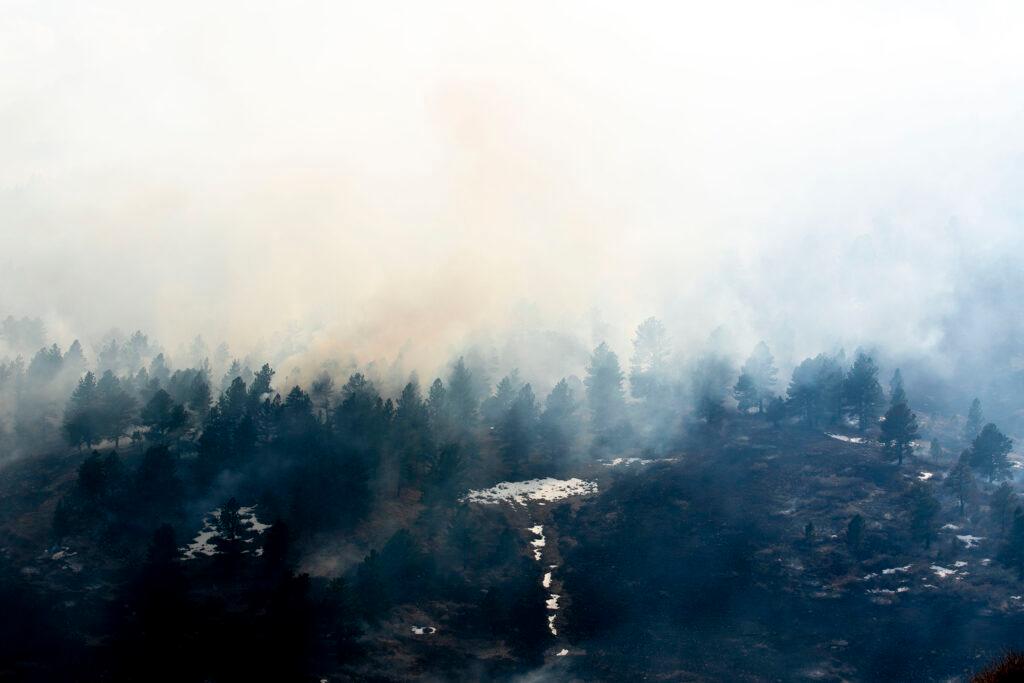
It’s still spring, but wildfires are already burning in Colorado and other Western states like New Mexico, where a 2,000-person crew is racing to contain the largest wildfire in that state’s history. It’s clear the coming season is likely to stretch firefighting resources throughout the region.
Hillary Johnson is the type of firefighter that experts say the federal government should be doing everything it can to hang onto. Johnson joined the U.S. Forest Service in 2015 and worked her way up from an engine unit to become a smokejumper, an elite class of firefighters who parachute in to fight dangerous fires in some of the nation’s most rugged terrain.
Johnson, based out of Montana, helped fight the 416 fire near Durango in 2018 and traveled to help contain complex wildfires in Alaska, California and New Mexico.
Not anymore.
“I’m out,” she said in a recent interview. “Yesterday was my last day with the Forest Service.”
In a few days, she’ll start a new job as a software developer.
As climate change helps fuel a wildfire season that’s starting earlier, lasting longer and growing more intense, federal agencies are once again facing staffing shortages as funding for pay increases and other reforms has stalled.
Johnson made $16 an hour base pay as a smokejumper. She was a seasonal employee. And like most seasonal employees with the service, she worked a lot of overtime to make the low wage worth it.
“I have been thinking about it, and I just want a better work-life balance for myself,” she said.
Tensions between wildland firefighters and federal agencies have simmered for years. CPR News spoke to four U.S. Forest Service employees like Johnson who say low pay and other labor problems are the main reason for the staffing shortages.

Officials with the U.S. Forest Service and Bureau of Land Management, which employ many federal firefighters, acknowledge struggling to hold on to their staff while competing with more predictable and better-paying local, state and private firefighting jobs.
To slow turnover, President Joe Biden in 2021 announced one-time bonuses and raises to ensure federal firefighters made at least $15 an hour. Congress also earmarked $600 million for pay raises and other job reforms in the infrastructure package, but those changes have not been enacted.
“None of that made it through to me,” Johnson said. “As far as I know, none of that has taken effect yet.”
Long sought reforms slow in arriving
Earlier this month, U.S. Forest Service Chief Randy Moore testified about the federal firefighter shortages at a Senate Appropriations Committee hearing. He said that while overall staffing levels were near the agency’s goals, some locations had only half the number of firefighters they needed.
“Fifty percent sounds a little scary thinking about the fires we’ll be facing in our various states,” Sen. Jeff Merkley, D-Oregon, replied during the exchange.
Moore told senators the Forest Service was backfilling firefighting positions with other agency workers and contract firefighters and trying to speed along pay raises and other fixes, including a long-sought job title change that would reclassify workers as firefighters instead of forest technicians.
The Forest Service and Bureau of Land Management declined CPR News’ interview requests. In emailed statements, the agencies said the process is complex, and they’re working to enact reforms and get the federal funding into firefighter paychecks. They also say some of the hiring gaps will be closed when college students finish their terms and apply for summer firefighting jobs.
Officials with the Colorado Division of Fire Prevention and Control did not respond to emailed questions about how the shortage of federal firefighters could affect the state’s firefighting response.

A time of rising risk
On a windy Saturday earlier this month, Katrina Stevens made the rounds in the Maxwell area, a mountain neighborhood southwest of Denver. A volunteer wildfire coordinator, Stevens spent the afternoon delivering wire mesh to keep embers out of household vents and checking on her community’s progress clearing flammable brush and trees away from their homes.
Colorado’s wildfire season is now 78 days longer than it was in the 1970s, state fire experts say. The state is just now entering the predicted peak of the 2022 season, but the warm, dry and exceptionally windy spring has already kept firefighters busy around the state.
Stevens has lived on the mountain for 18 years. She can see that conditions are getting more dangerous. She and other residents are trimming trees further and further away from their homes. Some are even hesitating to start fires in their fireplaces.
“Pretty much everyone will agree this will burn,” she said. “It’s been well over 100 years since it had a real serious fire.”
Stevens worries about understaffed and overworked federal fire crews. She lives on private land but said that’s a small comfort since it’s all connected.
She points to the mountains and valleys in the distance. Between her neighborhood and federal land, the ingredients for a major fire are all right there: Trees, drought-baked brush — and a lot of wind.









